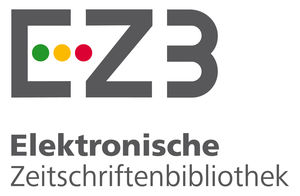Plea for the introduction of distorting transformations in high school programs in Senegal: the case of inversion
DOI:
https://doi.org/10.23925/1983-3156.2024v26i2p081-097Keywords:
Geometric inversion, Mathematic programAbstract
The Senegalese Mathematics program of 2006 (current program) invites the teacher to give examples of transformations not preserve the barycentre in Terminal S1 and S3. This is why we consider it necessary to provide teacher with a lesson on geometric inversion. In this article, we will on the one hand experiment and analyze activities aimed at introducing geometric inversion in Terminale S1 class. On the other hand, we will conduct a survey of teachers to get an idea of the place occupied by distorting transformations in the teaching of mathematics in Senegal.
References
Bkouche R. (1991) De la géométrie et des transformations, Repères-IREM no 04, Juillet 1991.
Chasles M. [Cha70] Rapport sur les progrès de la géométrie, qui date de 1870.
Kuntz G. (1998) une transformation oubliée qui sort de l’ordinaire l’inversion, Repères-IREM no 30
Walter A. (2001) Quelle géométrie pour l’enseignement au collège, petit x no 54 pp. 31-49.
Daniel, J-C (1995) Géométrie en mouvement, Repères IREM n°18
Diack T. et al. (2022), Etude descriptive de l’historique des transformations géométriques dans les programmes de mathématiques aux Sénégal. LIENS, ISSN 2772- 2392 n°2, Juillet 2022
Downloads
Published
How to Cite
Issue
Section
License

This work is licensed under a Creative Commons Attribution-NonCommercial-NoDerivatives 4.0 International License.
Autores que publicam nesta revista concordam com os seguintes termos:- Autores mantém os direitos autorais e concedem à revista o direito de primeira publicação, com o trabalho simultaneamente licenciado sob a Licença Creative Commons Attribution que permite o compartilhamento do trabalho com reconhecimento da autoria e publicação inicial nesta revista.
- Autores têm autorização para assumir contratos adicionais separadamente, para distribuição não-exclusiva da versão do trabalho publicada nesta revista (ex.: publicar em repositório institucional ou como capítulo de livro), com reconhecimento de autoria e publicação inicial nesta revista.
- Autores têm permissão e são estimulados a publicar e distribuir seu trabalho online (ex.: em repositórios institucionais ou na sua página pessoal) a qualquer ponto antes ou durante o processo editorial, já que isso pode gerar alterações produtivas, bem como aumentar o impacto e a citação do trabalho publicado (Veja O Efeito do Acesso Livre).













